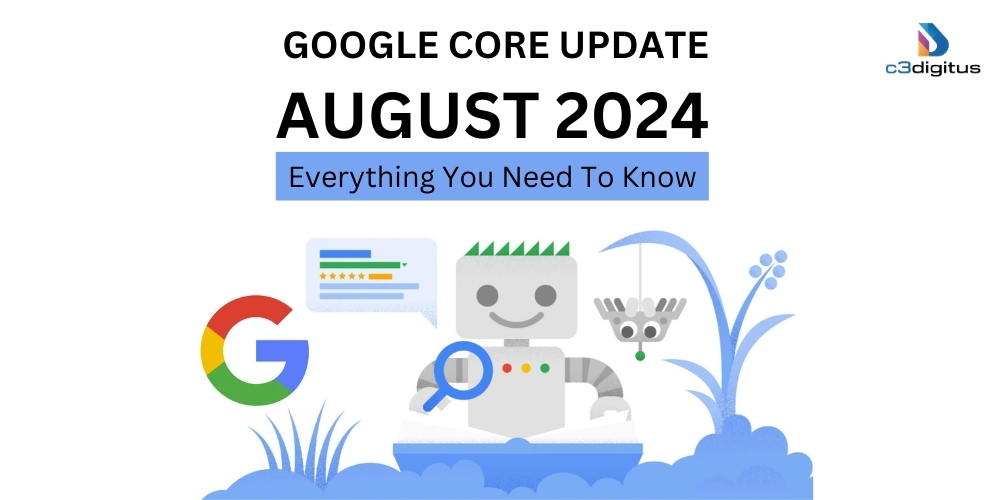A Google Core Update refers to a broad modification of the intricate search algorithms driven by Google. Such changes impact the manner in which websites are ranked across the search results. Such updates belong to a wider perspective of Google’s commitment to the incremental betterment of its results—refining many factors for ranking interpretation by the algorithm. Each core update is devised to benefit the search experience of users by essentially prioritizing high-quality and authoritative content.
Core updates from Google are not meant to penalize your site with a loss or gain of traffic. They are overall improvements made on the main algorithm by Google in an attempt to be precise and up-to-date. All this is done to ensure Google offers the best information and results, hence making users loyal. Google releases these a few times in a year. In the old days, the intervals between updates were longer, normally of the order of two weeks.
But now, including the update in August 2024, it appears that maybe the updating process is somewhat lengthy, perhaps around a month long. The reason might be because Google has to face not only the usual challenges of spam but also huge amounts of AI-generated content. Through AI, enormous content is created at an alarming rate, which creates a lot more work for Google in verifying the content and the websites from which it’s created.
What August 2024 Update Was Meant to Accomplish
Google’s August 2024 Core Update was designed to make assessment of quality, relevance, and user experience of content much better. This update mainly aimed to help the search engine provide even more accurate, useful, and relevant results in response to users’ queries. It was centered around better understanding user intent and rewarding content that closely aligns with what the users are looking for.
Most Affected Types of Websites
The most noticeable fluctuations were within the websites of the sectors where very high trust or accuracy is needed, including health, finance, and e-commerce. Similarly, content-heavy websites and particularly those with thin or outdated content were also said to have been hit in terms of ranking adjustments. Those particularly damaged were sites that had used keyword stuffing in content or low-quality backlinks.
What Google Says
In a recent LinkedIn exchange John Mueller, Google’s Senior Search Advocate advises that you should wait until a core update has fully rolled out before assessing its impact. While you can continue working on your website, it’s important to wait for the update to be complete if you want to accurately compare its effects. He notes that fluctuations often occur during the rollout, making it challenging to distinguish the update’s effects from other ranking issues.
John said
You’d really need to wait until the core update finishes rolling out to make any call about its effect. That’s not to say you should wait with working on your website, it’s just if you want to compare before vs after, waiting for it to be finished is important. From looking at social posts from SEOs tracking these things, there are often fluctuations during the rollout, I don’t think it’s worth trying to separate out the effects from the ranking issue.
Algorithm Adjustments
- Content Relevance: The update came up with more stringent considerations for content relevance checks to ascertain that a page does fully answer the user’s query.
- E-E-A-T (Experience, Expertise, Authoritativeness, Trustworthiness): E-E-A-T came more and more into focus, especially for YMYL (Your Money or Your Life) websites.
- Page Experience: Google has included its analysis of page experience elements, including Core Web Vitals, more into the algorithm for ranking. Hence, it has become very crucial to offer smooth, swift, and responsive user experiences on your website.
- Backlink Quality: The update fine-tuned how Google looks at backlinks; it is more about the relevance and power of linking sites than the raw number of backlinks.
Actionable Insights and Best Practices
To maintain or boost your website’s ranking after this update in August 2024, consider the following strategies:
Content Optimization
- Make Quality the Focal Point: Provide in-depth, researched content coming from experts in their field. Do not produce thin content or duplicate it.
- Update Regularly: Keep your content current and relevant, especially in rapidly changing fields like technology, finance, and health.
- Answer the user’s intent: Align your content as close as possible to the search intent behind target keywords. In other words, understand what people are really looking for and provide that information powerfully.
Search Engine Optimization
- Enhance Page Speed: Image optimization, browser caching, server response time reduction.
- Ensure Mobile Friendliness: Your site needs to be fully responsive and facilitate an intuitive experience across all devices.
- Fix Crawl Errors: Monitor for errors in crawling with Google Search Console regularly, and fix issues that might be blocking your site’s complete visibility in searches.
Improvements to User Experience
- Streamline Navigation: Make information available easily, as information is key. A lucid and natural menu structure with the help of internal links can do wonders.
- Improve Readability: Use simple fonts, enough spacing, and nice visuals to make the content digestible.
- Reduce pop-ups and ads: Intrusive interstitials can hurt user experience and negatively impact your rankings.
Real-World Examples and Case Studies
For instance, a financial advice website that had been doing well saw its rankings drop in the update. An audit later revealed that most of the content on the site was out-of-date and didn’t meet the new E-E-A-T guidelines. The website has been able to recover and do much better than before by updating the content with newer and more credible sources and enhancing the user experience.
Similarly, an e-commerce platform selling technological products worked on enhancing the page speed and realigning product descriptions more accurately to users’ queries. This increased its ranking and converted into successful conversions.
SEO Audit
It is very important to conduct an SEO audit and bring to your notice any impending problem that might be the root cause of the underperformance. An SEO audit will provide important revelations regarding how well-optimized a website is in terms of its structure, content quality, and backlink profile. It is also helpful in understanding whether your site is affected by the recent updates to the algorithms, which again makes you stride toward the right direction to keep or improve the position. SEO auditing helps identify different areas of concern and development of a plan strategically for the visibility and performance improvement of the website.
Step-by-Step Guide on How to Perform an SEO Audit
To assist you in making alterations according to the revised guidelines and changes from the August 2024 Google Core Update, please read this thorough SEO audit:
Step 1: Analyze Current Performance
- Review of Traffic Trends: Use tools such as Google Analytics to look up decreases or increases in organic traffic on the pages with the most significant changes.
- Check Keyword Rankings: Monitor your keyword rankings to see which are increasing and which are diminishing, especially when it comes to your most critical search terms.
Step 2: Check Quality of the Content
- Check Depth of Content: Confirm that content fully covers everything it should and is up to the current industry standards.
- Remove Duplicates: Make use of tools to detect and eliminate duplication of content that may be harming your SEO score.
- Check relevance: Make sure that all information is relevant to user queries and timely.
Step 3: Do a Technical SEO Audit
- Check Core Web Vitals: Analyze the performance of your website for speed, interactivity, and visual stability.
- Do an audit of mobile usability: Ensure your site is mobile-friendly by testing it on different devices and screen sizes.
- Check Indexing: Check if your website has been indexed in Google Search Console, and correct any errors.
Step 4: Improve User Experience
- Enhance the navigation of the site: Users should be able to easily find necessary information through clear and intuitive navigation.
- Focus on Visual Appeal: Use good images and a clean design to help boost the site’s engagement.
- Make accessible: your website should be accessible to all, including users with disabilities.
Step 5: Make the change and monitor
- Apply Fixes Gradually: Implement changes in phases to monitor their impact effectively.
- Monitor Performance: Keep monitoring the performance of your website in terms of traffic, rankings, and user engagement even after making the changes.
- Refine and Repeat: This is an ongoing process. Revisit your audit process regularly to adapt to any new changes in the algorithm.
How we can help
It is a daunting task to understand Google Algorithm Updates. That’s where c3digitus comes into the picture because we’re one of the front-line digital marketing companies helping in converting challenges into opportunities. Be it quality of content, finetuning of technical SEO, or developing a website, we have our expert team optimize your website for top-class performance. We apply the newest tools and strategies to ensure that your website not only meets but also exceeds new standards set by updates like the Google Core Update August 2024.
With c3digitus by your side, your digital existence will be transformed and set to thrive in a landscape that evolves with every update. Allow us to help you turn these updates into a trampoline for growth through additional traffic, engagement, and conversion in your business.



